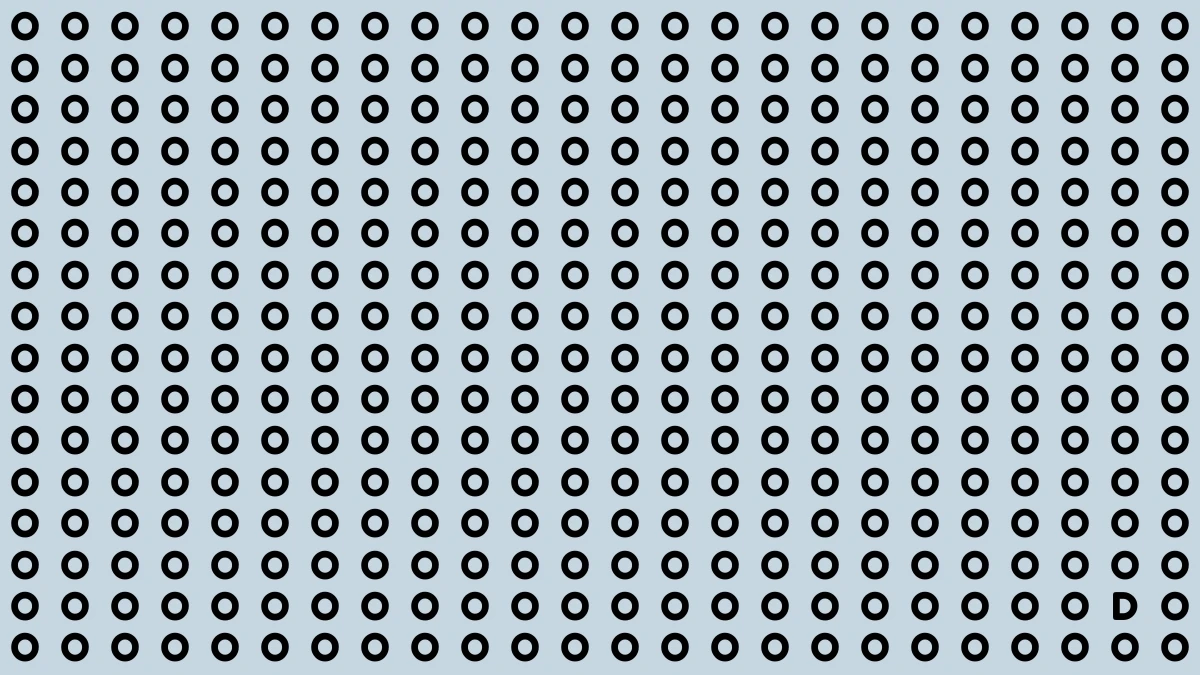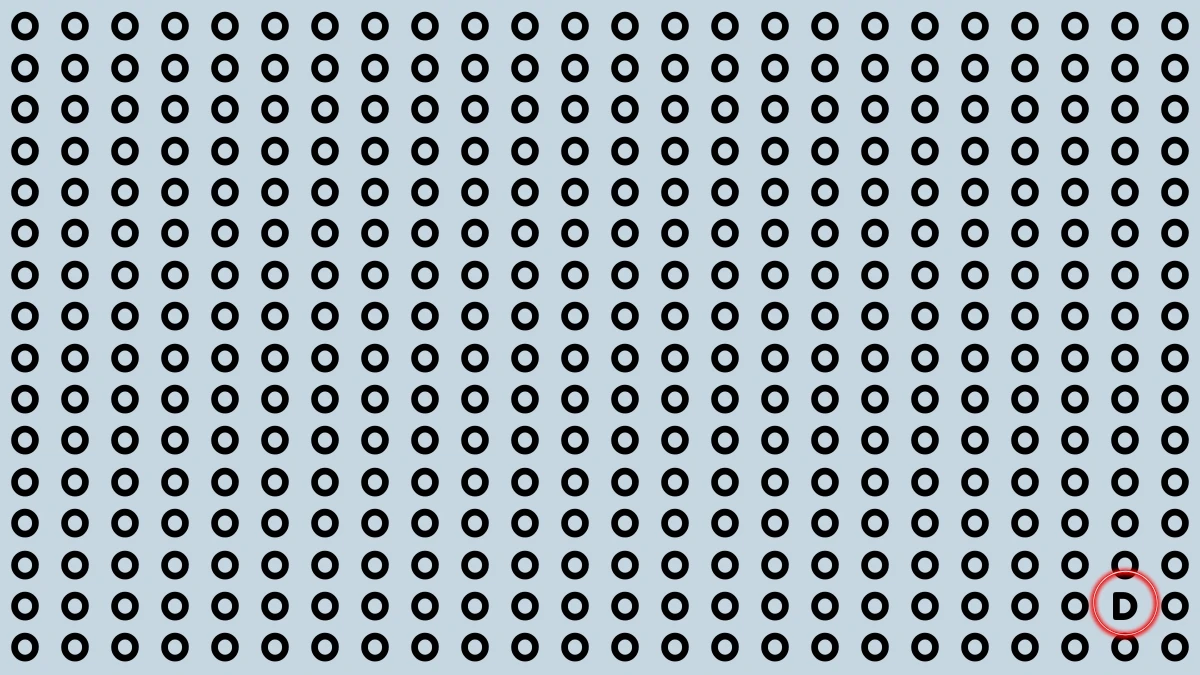Optical Illusion
An optical illusion is a fascinating phenomenon in which our eyes and brain perceive an image differently from physical reality.
It occurs when visual information is processed in a way that tricks the brain, leading us to see things that are distorted, misleading, or entirely different from what actually exists.
These illusions can involve shapes, colors, brightness, patterns, or even motion, creating effects like objects appearing larger or smaller than they are, lines seeming to bend, or static images appearing to move.
The reason behind this lies in the brain’s attempt to interpret sensory input quickly, often relying on assumptions, past experiences, and context.
As a result, optical illusions highlight the complex relationship between perception and reality, reminding us that what we see is not always the truth but rather the brain’s best guess.
Optical Illusion: Within 6 Seconds Spot The Letter D among Os
This optical illusion is a fun and tricky test of your observation skills. At first glance, the image looks filled with the letter “O,” but hidden among them is a single “D.”
The challenge is to spot the odd letter within just 6 seconds. Such visual puzzles are designed to stimulate your brain, improve attention to detail, and enhance concentration.
While it may seem simple, the similarity between the letters makes it a real test of focus and quick thinking. If you can find the hidden “D” in time, it’s a sign of sharp vision and excellent observation skills.

Optical Illusion: Within 6 Seconds Spot The Letter D among Os - Solution
In this optical illusion puzzle, you are asked to spot the letter “D” hidden among a large group of “O” characters within six seconds. At first glance, all the letters look identical, creating a challenging visual confusion.
The key is to focus carefully on the pattern, as the brain tends to gloss over small details when scanning quickly. If you observe closely, the letter “D” is located at the bottom-right corner of the image.
Unlike the “O”s, which are perfectly round, the “D” has a straight vertical line on its left side, making it distinct once noticed. Such puzzles are designed to test visual perception, concentration, and attention to detail.
They challenge the observer’s ability to break away from habitual scanning and notice subtle differences. Spotting the “D” within the time limit is a fun way to exercise cognitive focus, and it often brings a satisfying “aha” moment once discovered.






